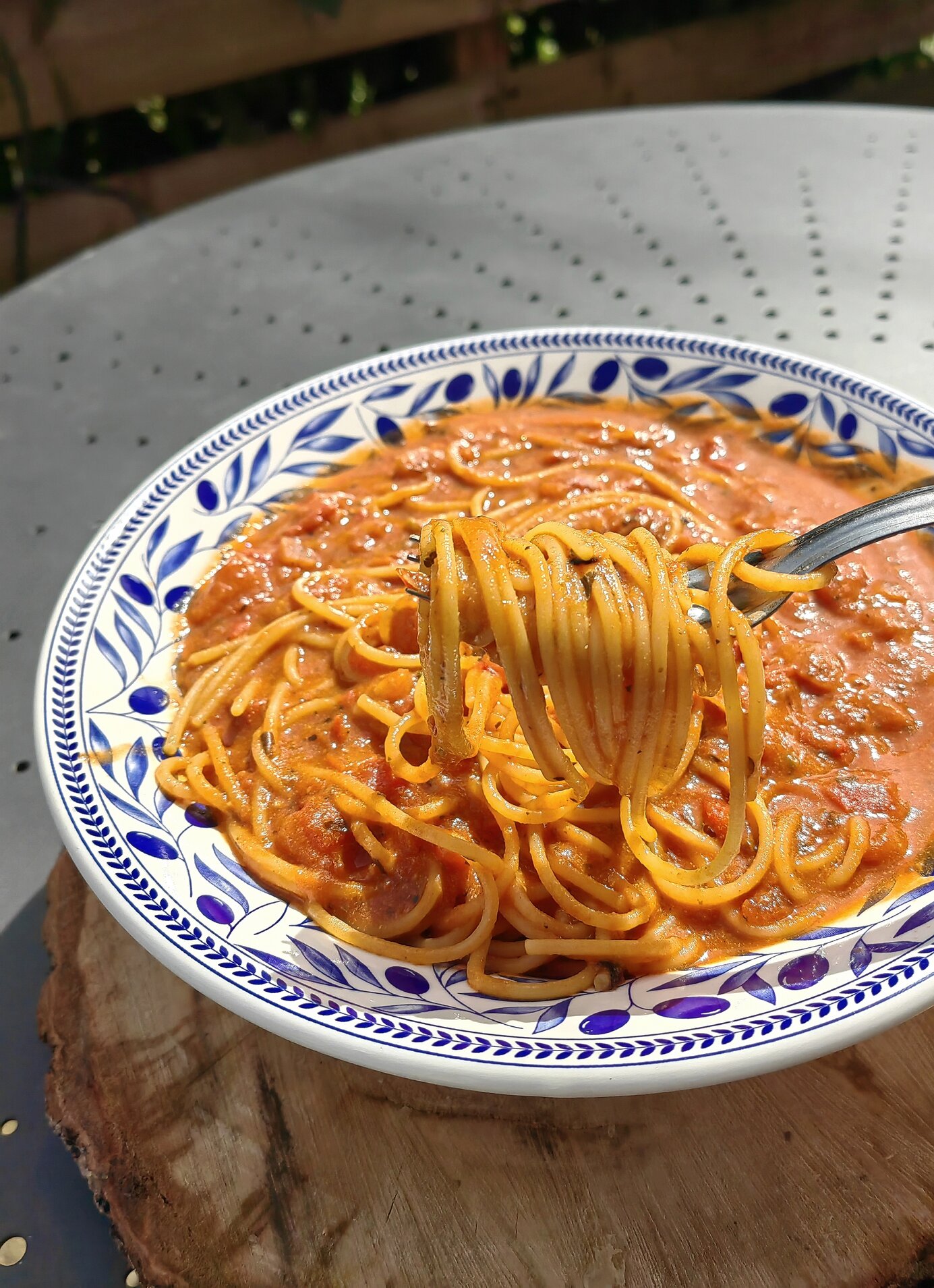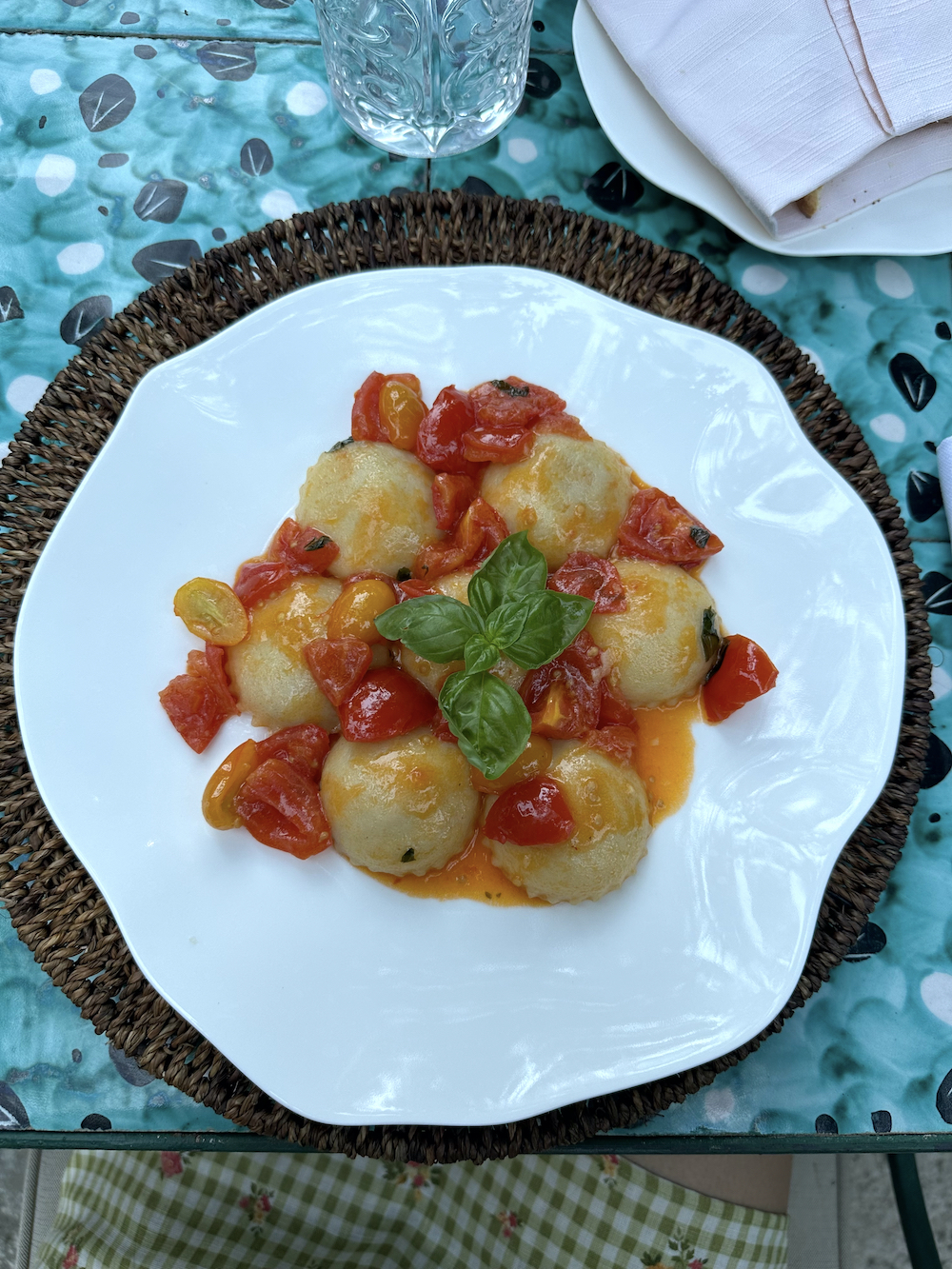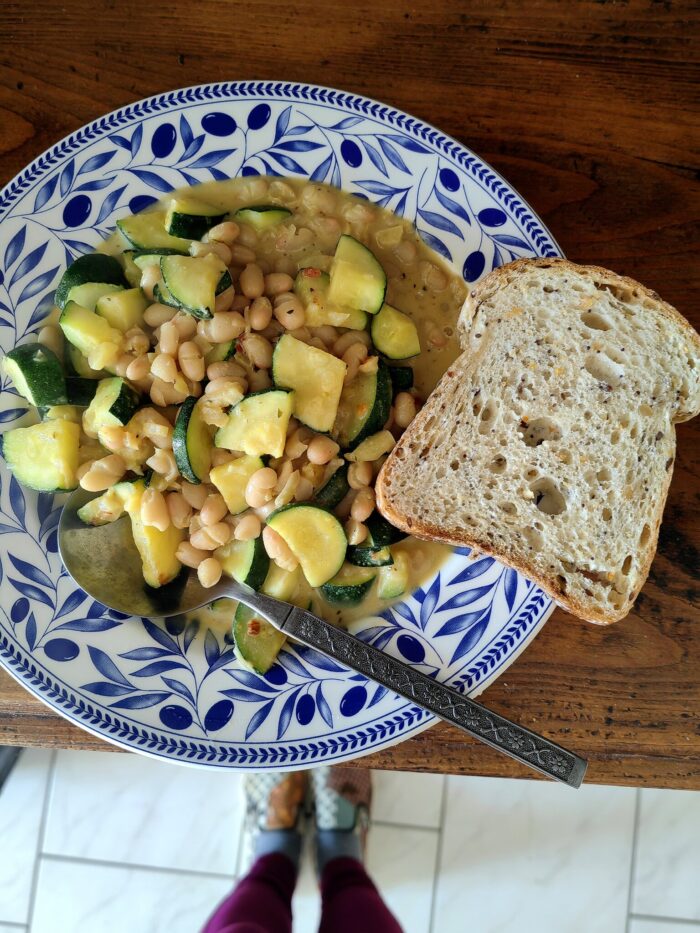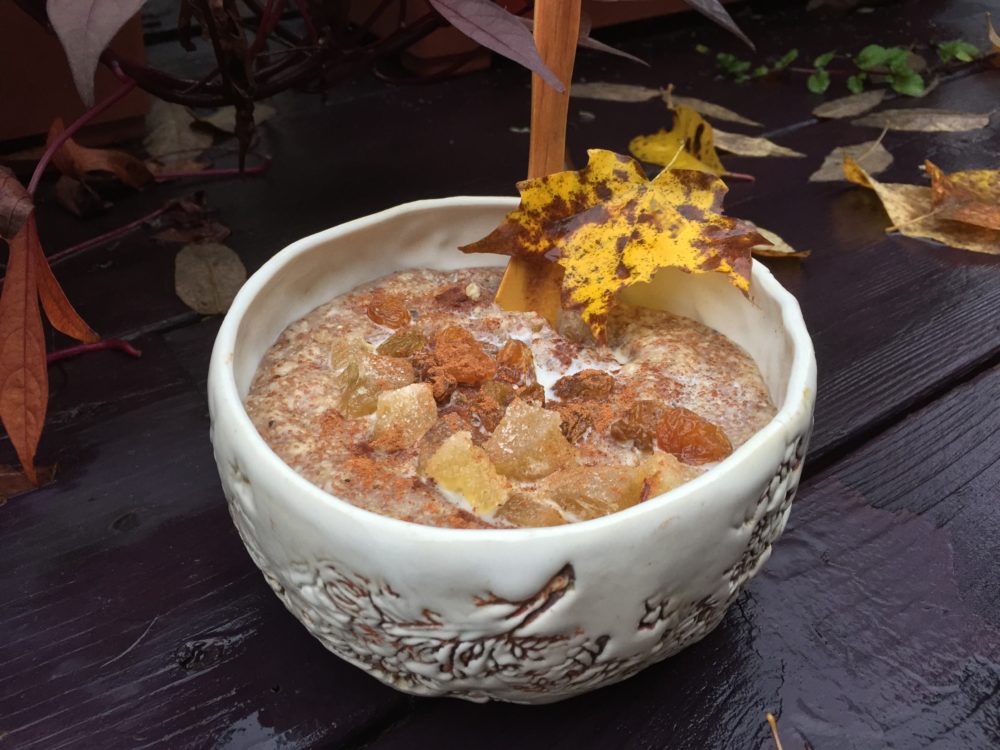You know how at Christmastime wrapping paper and anything red or green automatically becomes 300% more expensive? The same thing is happening in the food industry in how we label and define foods: from "natural" or "organic" to "vegan," a food item that might be intrinsically so will automatically be more expensive because of the label attached to it. It's one of the things that bothers me most about being vegan in general. Not the annoying questions about protein, but that the things a person of any dietary preference would buy--lentils, almond milk, dry spices--are made into a premium because someone decided to call out the fact that is not made of animal products.
The reason I subjected you to this mini-vent session is that this recipe was inspired by such an encounter. My foodie friend was so excited a few weeks ago to take me to a new all-vegan grocery store that opened near her apartment. I was, too, hoping to find some amazing new ingredients or snacks. I did find them, but everything in the baby-shoebox sized store was exorbitantly overpriced. I came out with a small bag of local nut brittle (a mere $8, and admittedly worth every penny), but even more importantly with inspiration. On the shelf was an intriguing, perfectly sliced loaf of raw-vegan gluten-free seed bread. I knew the little block wasn't "bread" by any interpretation of its definition, but since all the buzz words in the name were recently filtering through my diet, I was desperate to try it. But not for $14.
Hence this journey into raw baking. I confess that I cheated, since the "bread" recipe that follows isn't technically raw. For it to be so you'd need to use a dehydrator to dry out the very moist batter, which I don't currently own. Cooking it in the oven achieves the same result, but I'd be curious about how the dehydrator alters the consistency. Spreading the batter inside a thinner baking sheet would certainly make a different bread, too. (Please share your varieties!)
Be sure to alert those you're serving it to that the bread is also savory and moist--i.e., not for sandwiches or toast. Forks are essential, or a quick turn in the toaster oven. I enjoyed mine atop a salad, where it became a falafel-type focus rather than merely a side.
My version of a raw seed bread certainly doesn't compare to the one I saw in the store, and yet I was even more satisfied by the surprise and cost-efficiency of making it myself. Feel free to swap out the nuts/seeds for another kind, tahini for another nut butter, spices for whatever you'd rather have, and zucchini for a pepper or tomato. The variations are endless, and I hope you have fun making your own version!
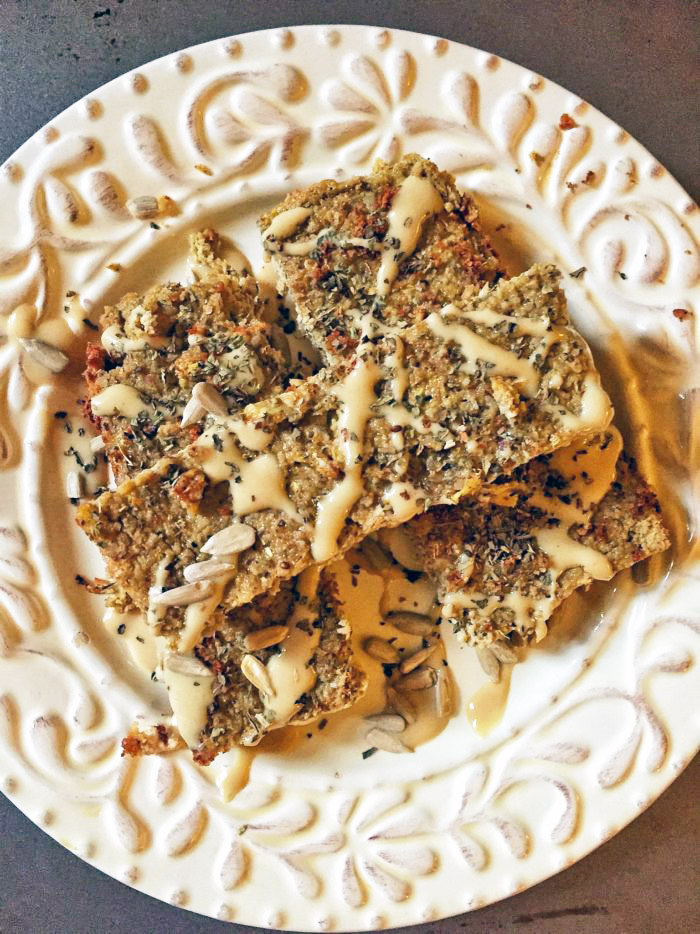

- 2 cups sunflower seeds, ground
- 1/4 cup flax meal
- 1/4 cup tahini
- 1 medium yellow zucchini, chopped
- 1/2 teaspoon salt
- 1 teaspoon cardamom
- 2 teaspoon cumin
- 1 teaspoon paprika
- 3/4 cup water

Directions
1. Preheat oven to 350°F.
2. Grind sunflower seeds to a flour-like consistency in a blender or food processor.
3. Add flax, tahini, and zucchini, and pulse until roughly combined.
4. Add spices and water in 1/4-cup increments. Pulse until well combined; the batter will be very moist and thick. Make sure you check for any chunks of zucchini that are left, and pulse until they're completely blended.
5. Spread the batter evenly in a thin layer inside a lined (with parchment) 8x8 pan. If you prefer the bread thinner/crispier, you can use a small cookie sheet.
6. Bake in the oven until the top is golden and firm, and a knife inserted comes out clean. If you'd like to make this bread truly raw, you can also use a dehydrator set to 110 degrees and dehydrate overnight.
7. Let cool completely before cutting. Cut into the size and shape pieces that you desire. Keep refrigerated.
Also by Jennifer: Greens and Grains Pesto Sautée
Related: Vegan Bagels and Cashew Cream Cheese
Get more like this—Subscribe to our daily inspirational newsletter for exclusive content!
__
Photos: Jennifer Kurdyla

